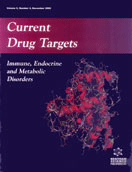Abstract
Apoptosis or programmed cell death occurs in both normal and pathological conditions, including cancer. Dysregulation of apoptosis allows transformed cells to continually and uninhibitedly enter the cell cycle, thus perpetuating the sequence of mutation, genomic instability and, finally, oncogenesis. The cell death machinery includes cell surface receptors, adaptor molecules, proteolytic enzymes, such as caspases, and a variety of mitochondrial proteins, which interact with each other in a complex fashion. In addition, extensive “cross-talk” exists between the apoptotic pathways and several other signaling systems that govern growth and differentiation. Recent advances in molecular techniques have shed light upon elements of the above pathways in assorted malignancies, including non-medullary thyroid carcinoma (ThyrCa). A subgroup of ThyrCa patients is (or becomes over time) refractory to standard treatment modalities and eventually succumbs to their disease. For such patients with clinically aggressive ThyrCa, novel therapeutic agents are urgently needed. Changes in the sensitivity of cells to apoptosis have clear implications for the treatment of any malignancy. In this review, we outline the main molecular targets that play a role in apoptosis in ThyrCa cells, and discuss various options for promoting apoptosis, either by pharmacologic or gene transfer therapeutic interventions.
Keywords: apoptosis, caspases, differentiation, gene therapy, oncogenes, programmed cell death, therapy, thyroid cancer, tumor suppressor genes, tumorigenesis



















